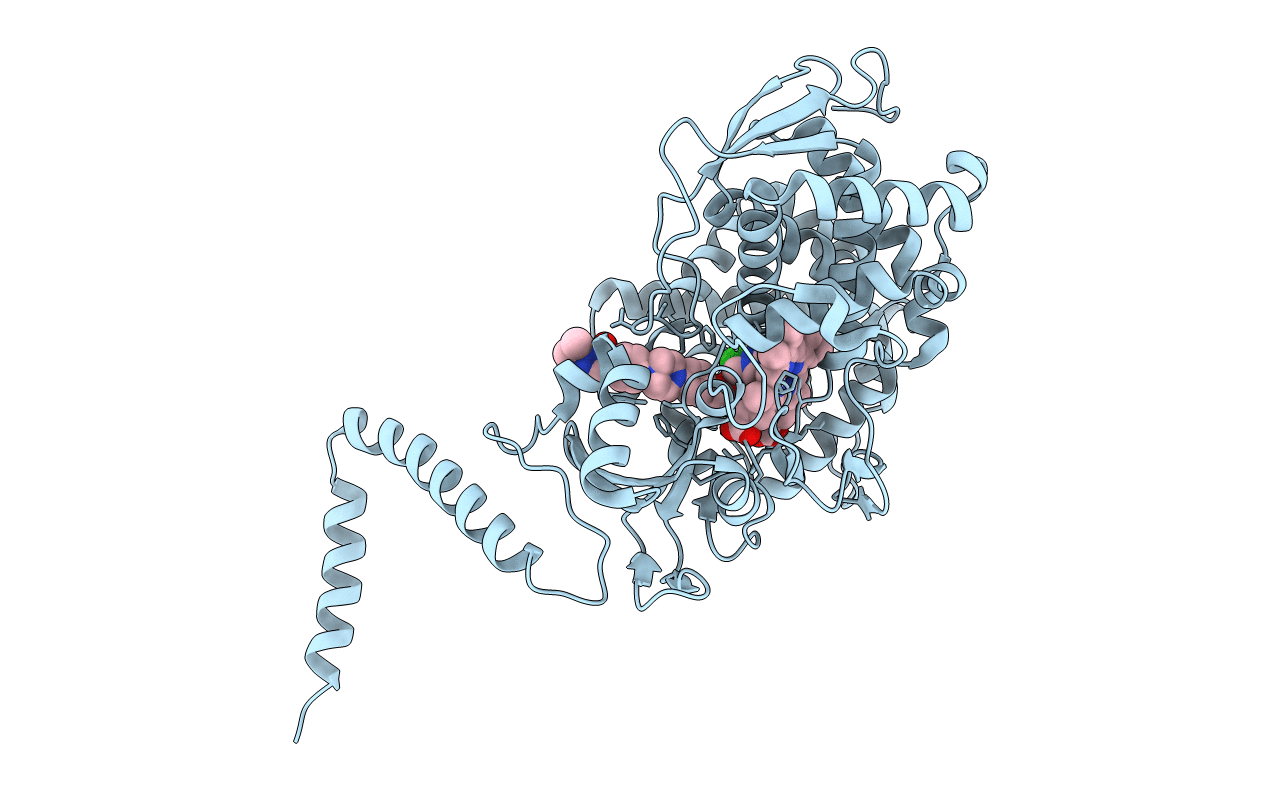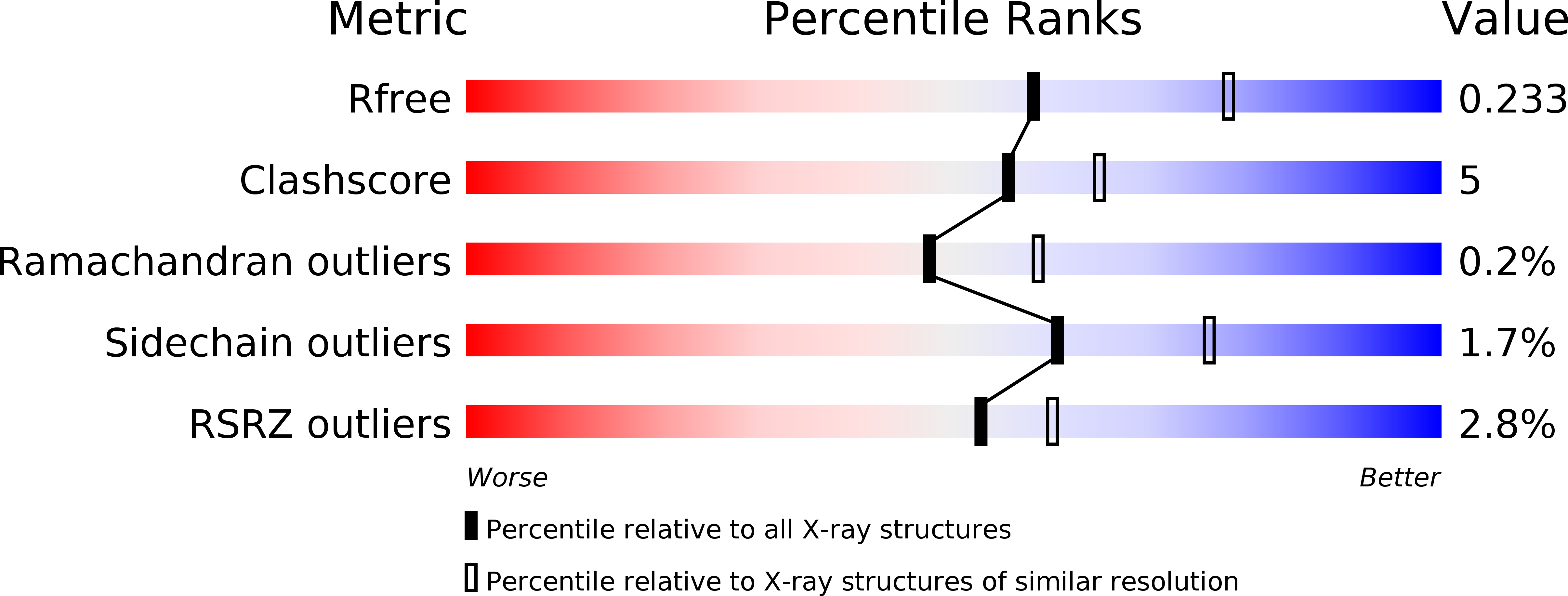
Deposition Date
2015-04-20
Release Date
2016-03-30
Last Version Date
2023-09-27
Entry Detail
PDB ID:
4ZE2
Keywords:
Title:
Saccharomyces cerevisiae CYP51 (Lanosterol 14-alpha demethylase) Y140H mutant complexed with itraconazole
Biological Source:
Source Organism:
Saccharomyces cerevisiae (strain YJM789) (Taxon ID: 307796)
Host Organism:
Method Details:
Experimental Method:
Resolution:
2.30 Å
R-Value Free:
0.23
R-Value Work:
0.18
R-Value Observed:
0.19
Space Group:
P 1 21 1


